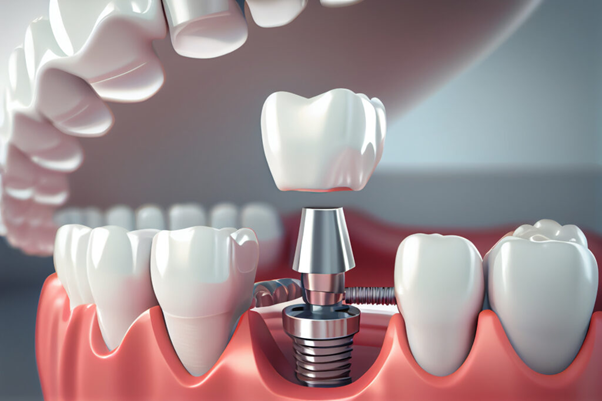Teeth implants have revolutionized dental restoration, offering a durable and aesthetic solution for those facing tooth loss. This article explores the comprehensive process of obtaining teeth implants and the myriad advantages they provide to patients.
Understanding Teeth Implants
Teeth implants, or dental implants, are artificial tooth roots that are surgically embedded into the jawbone. They serve as a stable foundation for replacement teeth or bridges, effectively mimicking the look and function of natural teeth. Typically made of titanium, teeth implants integrate with the jawbone through a process known as osseointegration, ensuring long-term stability and durability.
The Process of Getting Teeth Implants
Initial Consultation
The journey to obtaining teeth implants begins with a thorough consultation with a dental professional. During this initial visit, the dentist will assess the patient’s dental health, medical history, and the condition of the jawbone. Advanced imaging techniques, such as X-rays or 3D scans, may be employed to determine the optimal placement of the implants.
Treatment Planning
Once the consultation is complete, the dentist will create a personalized treatment plan. This plan will outline the type and number of implants required, as well as any preparatory procedures that may be necessary, such as bone grafting, to ensure adequate bone density for successful implant placement.
Implant Placement
The next step in the teeth implant process involves the surgical placement of the implants. This procedure is typically performed under local anesthesia, ensuring patient comfort. The dentist will make an incision in the gum tissue to expose the jawbone and then carefully insert the implant into the bone. Following this, the incision is closed, and the healing process begins.
Osseointegration
After the implant is placed, a healing period of several months is necessary for osseointegration to occur. During this time, the jawbone grows around the implant, securing it firmly in place. Regular follow-up appointments will be scheduled to monitor the healing process and ensure everything is progressing as expected.
Abutment Placement
Once osseointegration is complete, a small connector known as an abutment is attached to the implant. This abutment serves as a link between the implant and the final restoration (crown or bridge). Another short healing period may be required for the gum tissue to adjust around the abutment.
Final Restoration
The final step in the teeth implant process is the placement of the restoration, which is custom-made to match the patient’s natural teeth. The dentist will ensure proper fit, color, and alignment, completing the transformation of the patient’s smile.
Advantages of Teeth Implants
Teeth implants offer numerous benefits that contribute to their increasing popularity among dental restoration options.
Enhanced Aesthetics
One of the primary advantages of teeth implants is their natural appearance. Designed to look and function like real teeth, they significantly enhance the overall aesthetics of a patient’s smile, boosting self-confidence and improving social interactions.
Improved Functionality
Teeth implants restore the ability to chew and speak effectively, eliminating the discomfort often associated with traditional dentures. Patients can enjoy their favorite foods without fear of slippage or discomfort, making mealtime a pleasurable experience once again.
Durability and Longevity
When properly cared for, teeth implants can last a lifetime. Unlike other dental restoration methods, such as bridges or dentures, which may require replacement over time, implants provide a long-lasting solution with minimal maintenance.
Bone Preservation
Teeth implants play a crucial role in maintaining jawbone health. When a tooth is lost, the jawbone can deteriorate over time due to lack of stimulation. Implants provide the necessary support to preserve bone density, preventing the sunken appearance often associated with tooth loss.
Convenience and Comfort
Unlike removable dentures, teeth implants are a permanent solution that requires no additional adhesives or removals for cleaning. Patients can brush and floss their implants just like their natural teeth, making oral hygiene simple and convenient.
Enhanced Quality of Life
Overall, the advantages of teeth implants significantly improve the quality of life for patients. They not only restore functionality and aesthetics but also contribute to better oral health, self-esteem, and social interactions.
Conclusion
Teeth implants are a transformative dental solution that offers numerous benefits, making them an ideal choice for individuals seeking to restore their smiles. With a comprehensive process that includes consultation, placement, and restoration, teeth implants provide a durable and aesthetically pleasing alternative to traditional tooth replacement options. For those considering teeth implants, consulting with a qualified dental professional can provide the necessary guidance to embark on this life-changing journey.









